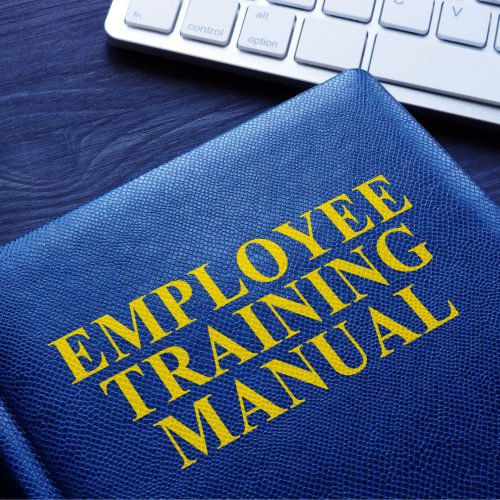A Comprehensive Approach to Creating Effective Training Manuals
Effective Training Manuals Guide. Learning how to write a training manual is essential in today’s professional environments. A training manual is a strategic document crucial for imparting knowledge and skills to a specific audience, whether for onboarding new employees, guiding customers in product usage, or enhancing educational programs. It provides clear, step-by-step instructions and ensures a consistent learning experience across different settings. A training manual’s effectiveness directly influences a team’s efficiency and competency, making it a crucial tool in employee development, customer satisfaction, and educational effectiveness.
Here are the steps to create an effective, clear, and user-friendly training manual:
1. Identify the Purpose and Audience
Understanding the purpose and audience is the foundational step in creating a training manual. Define the specific goals and identify who will read the manual—new employees, seasoned staff, customers, or students. Tailor the content complexity, learning objectives, engagement style, and language to fit the audience’s needs and preferences.
2. Outline the Content
Organize the manual’s structure logically and coherently. Start with a broad framework, arranging topics sequentially from basic to advanced concepts. Break down each major section into smaller, manageable subsections or modules, ensuring a balance between depth and breadth. Plan to include interactive elements and real-life scenarios.
3. Write the Content
Create the manual’s content with clarity, detail, and conciseness. Start each section with an introduction, followed by detailed explanations and step-by-step instructions. Use relevant examples, anecdotes, or case studies to illustrate points. Maintain a consistent tone and language style, concluding each section with summaries or key takeaways.
4. Incorporate Visual Aids
Enhance the manual with visual aids such as images, charts, and diagrams. These visuals clarify complex information and engage the learner. Ensure high-quality, relevant visuals that are clearly labeled and accompanied by explanatory captions or legends. In digital formats, consider using interactive visuals or infographics.
5. Include Real-World Examples
Bridge the gap between theory and practice by incorporating real-world examples, case studies, and practical scenarios. These examples provide context, enhance engagement, improve retention, develop problem-solving skills, and offer relatable content. Tailor the examples to the audience’s day-to-day activities for increased relevance and utility.
6. Review and Edit
Review and edit the manual meticulously to ensure clarity, accuracy, and consistency. Engage potential users and subject matter experts for feedback and incorporate their insights. Make iterative revisions, rephrasing unclear sections, tweaking layouts, and enriching content. Conduct a final review to confirm alignment with the manual’s objectives.
7. Publish and Distribute
Choose the appropriate distribution methods to ensure the manual reaches its intended audience. Options include physical copies, digital downloads, online access, or a hybrid approach. Ensure users are aware of the manual’s availability through announcements or instructional sessions. Maintain ongoing accessibility for ease of use.
8. Gather Feedback and Update Regularly
Establish a system for continuous improvement by collecting feedback from users. Regularly review and update the manual based on feedback and changes in procedures or industry standards. Communicate updates to users to maintain relevance and effectiveness. This ensures the manual remains a valuable resource over time.
Design Tips for Effective Training Manuals
Stick to branding, maintain design harmony, use colors creatively but sparingly, and ensure an easy-to-read layout with a clear visual flow. These elements make the manual visually appealing, user-friendly, and engaging.
How a Remote Worker Can Help
A Remote Worker can significantly aid in writing a training manual by conducting research, organizing content, drafting sections, editing, and incorporating visual elements. Remote Workers can also facilitate feedback collection and help update the manual, saving time and enhancing its quality.
Streamline Your Training Manual Creation with Remote Dealer Staffing
Crafting an effective training manual is a significant undertaking. Remote Dealer Staffing offers professional Remote Workers who can assist in researching, drafting, organizing, and updating training manuals, along with managing other business tasks. By collaborating with a Remote Worker from Remote Dealer Staffing, you ensure high-quality manuals and enhance business efficiency. Reach out to us to discover how a dedicated Remote Worker can contribute to your business’s success.

